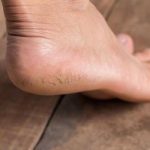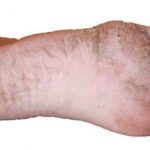This article mainly tells you the ways to treat a groin injury. The groin injury occurs when you overstretched a muscle. It can appear into small tears in the tissue. It usually happens if you haven’t warmed up properly or if you’re attempting to lift more than you’re habitual to — both of which sound like culprits in your case. Groin pulls are common in people who play sports that require a lot of physical work such as running and jumping. In particular, suddenly jumping or changing direction is a likely cause groin injury. Groin pulls often appear in people who play soccer and football, and they make up about 11% of all fractures in professional players. Competitors that participate in sports that require a lot of running or brisk change in direction are most sensitive to groin injuries. Other activities like kicking, hopping and the quick motions also put a lot of strain on the groin muscles. Another exercise that puts a lot of pressure on the groin is any movement that results in the uncertain pressure being applied. Such as a fall, arriving suddenly, twisting and bending while pressure is applied to the groin muscles.
Here are Some Symptoms of a Groin Injury:
- Pain in the groin and inside the thigh
- Pain when you bring your legs together
- Pain when you raise your knee
- pain during any kind of physical activity
- pain in hip joints
- A stabbing pain in the groin area
- Swelling and/or bruising
- Inability to move the leg inward
- Loss of upper leg strength with certain movements
- Muscle spasms
What to Do?
- Stop exercising if you feel you have pulled a muscle
- Use ice immediately
- Use a compression wrap or garment
- Use natural forms of anti-inflammatories
- See a physician if you are not better by two weeks
What Not to Do?
- Massage the injured groin area right away
- Forget to be cautious of stretching in the initial stages of the injury
- Take a break from your lower body strength routine
- Use instead of heat to treat the groin
Contents
Remedies to Treat a Groin Injury:
1.) Rest to Treat a Groin Injury
Muscle strains need time to heal. Avoid workout until the pain disappears. The first thing that your doctor might prescribe is to take rest and to keep the leg from bearing weight rest is essential. The main rule of thumb with resting a pressure should be this; if it painful; don’t dare do it. If you are able to walk without feeling your pain, without any pain at all, then you should walk a little. But if an activity brings any kind of pain or discomfort, stop doing it directly, and add that action to the list of stuff to avoid until you get to recover. Try and give yourself as much of a break as possible after an injury to treat a groin injury.
2.) Take an Anti-Inflammatory to Treat a Groin Injury
In the first few days, an anti-inflammatory medicine like ibuprofen can help in reducing the swelling and inflammation of the injured groin muscle. However, take the anti-inflammatory after consulting the doctor. Anti-inflammatory drugs(NSAIDs), like Advil or Motrin, will help to treat pain and inflammation. Despite, studies show their effects are uncertain especially if taken long term. But always remember these drugs can have side effects; they should be used only occasionally unless your doctor specifically says otherwise.
3.) Compress the Injured Groin Muscle to Treat a Groin Injury
Compression helps to reduce swelling and stabilize the injured muscle. The use of special braces designed for the groin area is helpful. It is made to fit the groin area without being too tight, which can cut off circulation to the region. bands are available in most medical stores. Use compression bandages to further reduce pain and give your leg support, this will help to cure your groin injury.
4.) Elastic Wraps or Groin Strapping to Treat a Groin Injury
You can use these wraps to get rid of groin injury. However, make sure that you do not wrap it tightly, especially during walking. Reduce your activity if you feel pain. Whenever you begin to resume your activity, concentrate on your body signals. Applying an elastic compression covers or wraps to the groin can reduce pain from swelling and keep the swelling down. After rubbing the ice to the affected area, wrap the thigh to keep it compressed during the ice treatment. Compression wraps also help reduce pain and re-injury as you return to activity in a week or two.
5.) Exercise or Stretch to Treat a Groin Injury
Perform a simple stretch that targets the groin area during your workout or participate in sports. Sit on the floor with your back gently against the wall. Place the bottoms of your feet collectively and pull your feet near your groin. Gently and gradually take your knees toward the earth. Hold this stretch for 15 seconds and repeat once. Warm up and stretch. A major reason of groin injury is the lack of usual warm up and stretching exercises before the physical activity. Stretching relaxes the body muscles and prepares it for activity while an adequate warm-up period before exercise gets the blood flowing to the muscle and press it to work correctly under stress.
6.) Ice your Groin to Treat a Groin Injury.
Ice helps decrease the swelling associated with muscle strains, which both causes pain and restricts the muscle & ability to heal. Ice should be rubbed for 20 minutes at a time, several times per day, with a barrier between the ice and the skin, Such as a thin cotton towel or any cotton cloth. What you need to do is compress this cold towel on affected area to treat a groin injury.











